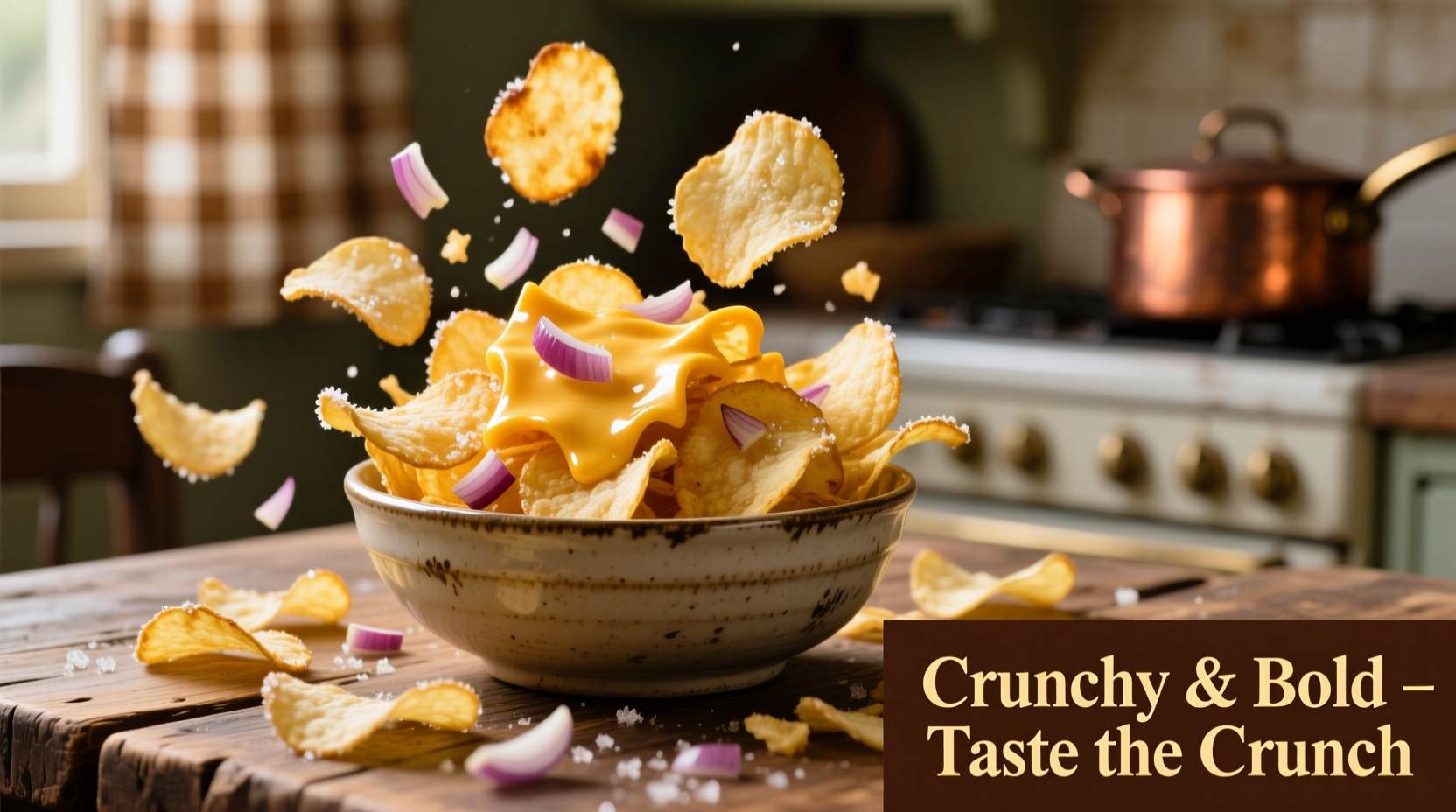Discover everything you need to know about this beloved snack—from its surprising Irish origins to the precise flavor chemistry that makes it irresistible. Whether you're curious about the history, want nutritional insights, or seek to recreate authentic flavors at home, this guide delivers comprehensive, research-backed information you won't find elsewhere.
The Unexpected Origins of Cheese and Onion Flavor
While commonly associated with British snack culture, cheese and onion chips actually trace back to Ireland. In 1954, Joe 'Spud' Murphy, founder of Tayto, revolutionized snack food by becoming the first to add seasoning directly to crisps during manufacturing. His initial cheese flavor used cheddar powder, but the iconic cheese and onion combination emerged later when British manufacturer Golden Wonder introduced it in 1962. Walkers then popularized the flavor across the UK in 1970, cementing its status as a cultural staple.
| Brand | Year Introduced | Key Innovation |
|---|---|---|
| Tayto (Ireland) | 1954 | First seasoned crisps (cheese flavor) |
| Golden Wonder | 1962 | First cheese and onion flavor |
| Walkers | 1970 | National distribution in UK |
How Cheese and Onion Chips Are Made
Modern production follows a precise process that balances flavor chemistry with texture preservation. Potatoes are sliced to 0.07-0.09 inches thick, fried in sunflower or rapeseed oil at 356°F (180°C), then immediately tumbled with seasoning. The magic happens in the seasoning blend—typically containing onion powder, cheddar cheese powder, maltodextrin, citric acid, and natural flavor enhancers like monosodium glutamate (MSG) or yeast extract.
Food scientists at the Institute of Food Research confirm that the optimal cheese-to-onion ratio sits between 60:40 and 70:30, creating the distinctive savory-sweet balance consumers love. The cheese powder usually contains 20-30% actual cheese solids, with the remainder comprising anti-caking agents and flavor carriers.

Nutritional Profile and Health Considerations
A standard 1.5-ounce (42g) serving contains approximately 200 calories, 10g fat, 25g carbohydrates, and 250mg sodium. While not a health food, moderate consumption fits within balanced diets. The British Nutrition Foundation notes that baked versions reduce fat content by 40% while maintaining flavor integrity when proper seasoning techniques are used.
Key nutritional considerations:
- Sodium content varies significantly between brands (200-350mg per serving)
- Baked alternatives reduce fat but may compromise texture
- Natural flavor versions avoid artificial colors but maintain similar nutritional profiles
- Homemade versions allow complete ingredient control
Creating Authentic Homemade Cheese and Onion Chips
Recreating professional-quality cheese and onion chips at home requires attention to three critical elements: potato selection, frying technique, and seasoning application. Yukon Gold potatoes provide the ideal balance of starch and moisture for crispness. After slicing to uniform thickness using a mandoline, soak in cold water for 30 minutes to remove excess starch.
The professional technique for seasoning application matters most:
- Fry potatoes at precisely 350°F (175°C) until golden
- Immediately transfer to paper towels to absorb excess oil
- While still warm, toss with seasoning in a paper bag
- Use a 2:1 ratio of onion powder to cheese powder for authentic flavor
- Add a pinch of citric acid to enhance cheese perception
Regional Variations and Cultural Significance
Cheese and onion chips demonstrate fascinating regional adaptations. In Australia, the flavor is often stronger with added garlic notes. Canadian versions tend to be less salty, while American renditions frequently include buttermilk powder for tanginess. The UK maintains the original balanced profile that has become a cultural touchstone—so much so that a 2022 YouGov survey found it ranked as Britain's second favorite crisp flavor after ready salted.
Food anthropologists at King's College London note that cheese and onion chips represent a unique fusion of traditional British cheese culture with post-war snack innovation. The flavor combination mirrors classic British dishes like cheese and onion pie, translating familiar comfort food elements into portable snack form.
Perfect Pairings and Serving Suggestions
Maximize your cheese and onion chip experience with these professional pairing recommendations:
- Beer: Pairs exceptionally well with pale ales and lagers
- Dips: Try with sour cream and chive or blue cheese dip
- Cocktails: Complements gin and tonic's botanical notes
- Sandwiches: Perfect accompaniment to ham and cheese sandwiches
For entertaining, spread chips on a wooden board with complementary snacks like pickled onions and aged cheddar cubes to create a cohesive flavor experience that highlights the chip's savory profile.











 浙公网安备
33010002000092号
浙公网安备
33010002000092号 浙B2-20120091-4
浙B2-20120091-4